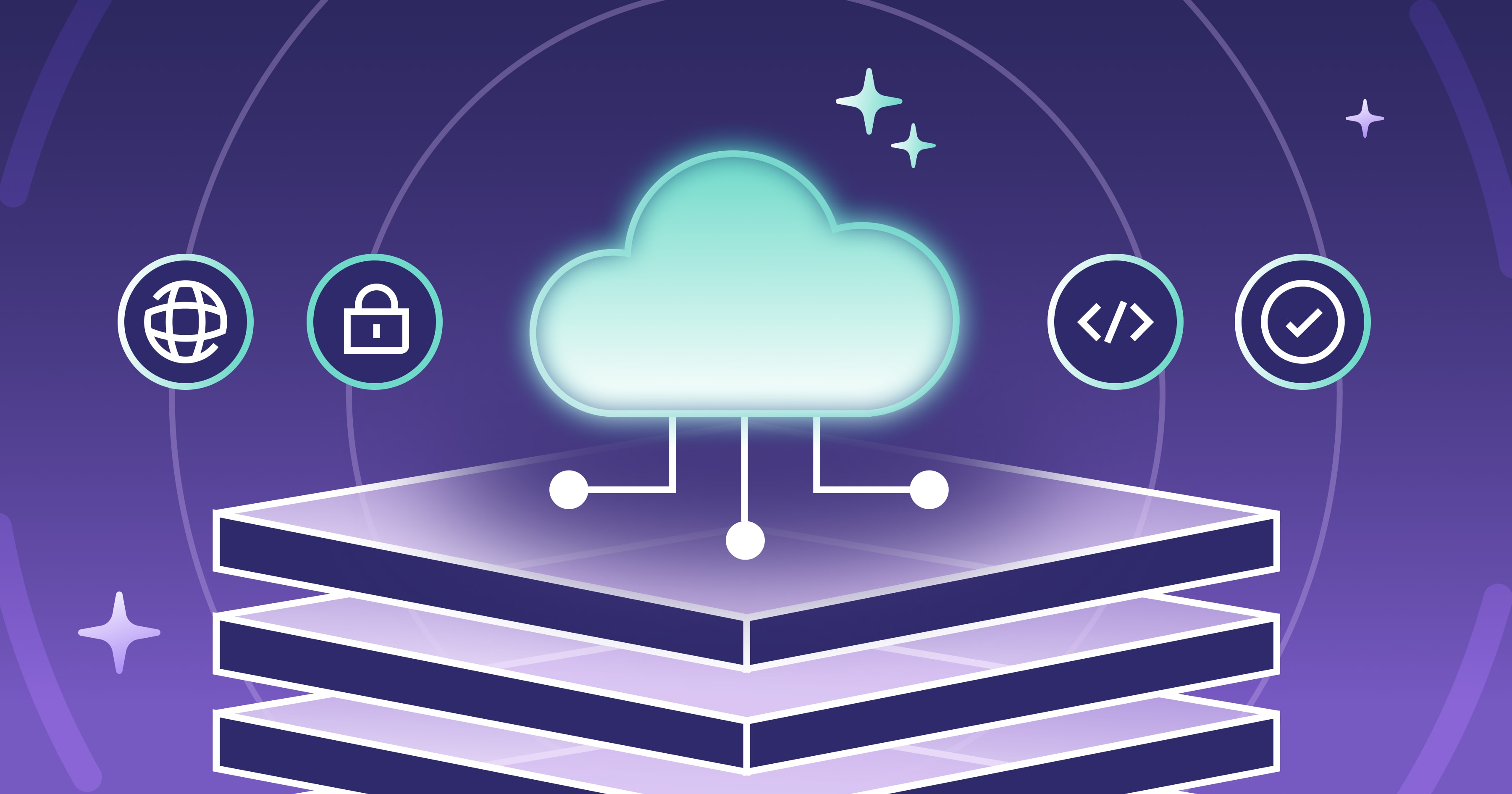Published on: October 8, 2025
7 min read
Streamline enterprise artifact management with GitLab
Platform teams can spend $200K+ annually managing fragmented artifact systems. Learn about GitLab's strategic approach to consolidation.

For the past six years, I've worked on artifact management at GitLab and have had hundreds of conversations with platform engineers trying to solve the same challenge: managing artifacts when they've become a sprawling, expensive mess. What started as simple Docker registries and Maven repositories has evolved into a complex web of tools, policies, and operational overhead that's consuming more time and budget than anyone anticipated.
I recently spoke with a platform engineer at a Fortune 500 company who told me, "I spend more time managing artifact repositories than I do on actual platform improvements." That conversation reminded me why we need an honest discussion about the real costs of fragmented artifact management — and what platform teams can realistically do about it. This article will help you better understand the problem and how GitLab can help you solve it through strategic consolidation.
Real-world impact: The numbers
Based on data from our customers and industry research, fragmented artifact management typically results in the following costs for a midsize organization (500+ developers):
- Licensing: $50,000-200,000 annually across multiple tools
- Operational overhead: 2-3 FTE's equivalent time spent on artifact management tasks
- Storage inefficiency: 20%-30% higher storage costs due to duplication and poor lifecycle management
- Developer productivity loss: 15-20 minutes daily per developer due to artifact-related friction
For large enterprises, these numbers multiply significantly. One customer calculated they were spending over $500,000 annually just on the operational overhead of managing seven different artifact storage systems.
The hidden costs compound daily:
Time multiplication: Every lifecycle policy, security rule, or access control change must be implemented across multiple systems. What should be a 15-minute configuration becomes hours of work.
Security gap risks: Managing security policies across disparate systems creates blind spots. Vulnerability scanning, access controls, and audit trails become fragmented.
Context switching tax: Developers lose productivity when they can't find artifacts or need to remember which system stores what.
The multiplication problem
The artifact management landscape has exploded. Where teams once managed a single Maven repository, today's platform engineers juggle:
- Container registries (Docker Hub, ECR, GCR, Azure ACR)
- Package repositories (JFrog Artifactory, Sonatype Nexus)
- Language-specific registries (npm, PyPI, NuGet, Conan)
- Infrastructure artifacts (Terraform modules, Helm charts)
- ML model registries (MLflow, Weights & Biases)
Each tool comes with its own authentication system, lifecycle policies, security scanning, and operational requirements. For organizations with hundreds or thousands of projects, this creates an exponential management burden.
GitLab's strategic approach: Depth over breadth
When we started building GitLab's artifact management capabilities six years ago, we faced a classic product decision: support every artifact format imaginable or go deep on the formats that matter most to enterprise teams. We chose depth, and that decision has shaped everything we've built since.
Our core focus areas
Instead of building shallow support for 20+ formats, we committed to delivering enterprise-grade capabilities for a strategic set:
- Maven (Java ecosystem)
- npm (JavaScript/Node.js)
- Docker/OCI (container images)
- PyPI (Python packages)
- NuGet (C#/.NET packages)
- Generic packages (any binary artifact)
- Terraform modules (infrastructure as code)
These seven formats account for approximately 80% of artifact usage in enterprise environments, based on our customer data.
What 'enterprise-grade' actually means
By focusing on fewer formats, we can deliver capabilities that work in production environments with hundreds of developers, terabytes of artifacts, and strict compliance requirements:
Virtual registries: Proxy and cache upstream dependencies for reliable builds and supply chain control. Currently production-ready for Maven, with npm and Docker coming in early 2026.
Lifecycle management: Automated cleanup policies that prevent storage costs from spiraling while preserving artifacts for compliance. Available at the project level today, organization-level policies planned for mid-2026.
Security integration: Built-in vulnerability scanning, dependency analysis, and policy enforcement. Our upcoming Dependency Firewall (planned for late 2026) will provide supply chain security control across all formats.
Deep CI/CD integration: Complete traceability from source commit to deployed artifact, with build provenance and security scan results embedded in artifact metadata.
Current capabilities: Battle-tested features
Maven virtual registries: Our flagship enterprise capability, proven with 15+ enterprise customers. Most complete Maven virtual registry setup within two months, with minimal GitLab support required.
Locally-hosted repositories: All seven supported formats offer complete upload, download, versioning, and access control capabilities supporting critical workloads at organizations with thousands of developers.
Protected artifacts: Comprehensive protection preventing unauthorized modifications, supporting fine-grained access controls across all formats.
Project-level lifecycle policies: Automated cleanup and retention policies for storage cost control and compliance.
Performance and scale characteristics
Based on current production deployments:
- Throughput: 10,000+ artifact downloads per minute/per instance
- Storage: Customers successfully managing 50+ TB of artifacts
- Concurrent users: 1,000+ developers accessing artifacts simultaneously
- Availability: 99.99% uptime for GitLab.com for more than 2 years
Strategic roadmap: Next 18 months
Q1 2026
- npm virtual registries: Enterprise proxy/cache for JavaScript packages
- Docker virtual registries: Container registry proxy capabilities
Q2 2026
- Organization-level lifecycle policies (Beta): Centralized cleanup policies with project overrides
- NuGet virtual registries (Beta): .NET package proxy support
- PyPI virtual registries (Beta): Completing virtual registry support for Python
Q3 2026
- Advanced Analytics Dashboard: Storage optimization and usage insights
Q4 2026
- Dependency Firewall (Beta): Supply chain security control for all artifact types
When to choose GitLab: Decision framework
GitLab is likely the right choice if:
- 80%+ of your artifacts are in our seven supported formats
- You're already using GitLab for source code or CI/CD
- You value integrated workflows over standalone feature richness
- You want to reduce the operational complexity of managing multiple systems
- You need complete traceability from source to deployment
Migration considerations
Typical timeline: 2-4 months for complete migration from Artifactory/Nexus
Common challenges: Virtual registry configuration, access control mapping, and developer workflow changes
Success factors: Phased approach, comprehensive testing, and developer training
Most successful migrations follow this pattern:
- Assessment (2-4 weeks): Catalog current artifacts and usage patterns
- Pilot (4-6 weeks): Migrate one team/project end-to-end
- Rollout (6-12 weeks): Gradual migration with parallel systems
- Optimization (ongoing): Implement advanced features and policies
Better artifact management can start today
GitLab's artifact management isn't trying to be everything to everyone. We've made strategic trade-offs: deep capabilities for core enterprise formats rather than shallow support for everything.
If your artifact needs align with our supported formats and you value integrated workflows, we can significantly reduce your operational overhead while improving developer experience.
Our goal is to help you make informed decisions about your artifact management strategy with a clear understanding of capabilities and our roadmap.
Please reach out to me at [email protected] to learn more about GitLab artifact management. I can discuss specific requirements and connect you with our technical team for a deeper evaluation.
This blog contains information related to upcoming products, features, and functionality. It is important to note that the information in this blog post is for informational purposes only. Please do not rely on this information for purchasing or planning purposes. As with all projects, the items mentioned in this blog and linked pages are subject to change or delay. The development, release, and timing of any products, features, or functionality remain at the sole discretion of GitLab.
We want to hear from you
Enjoyed reading this blog post or have questions or feedback? Share your thoughts by creating a new topic in the GitLab community forum.
Share your feedback
